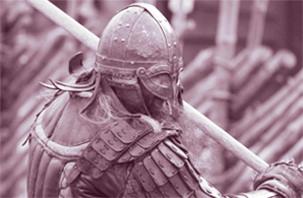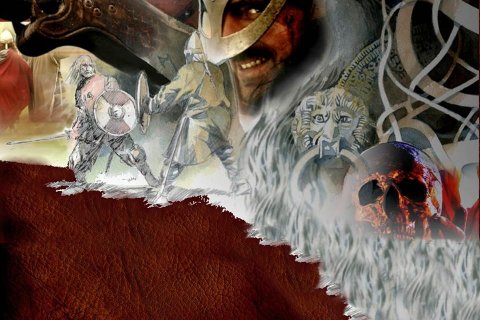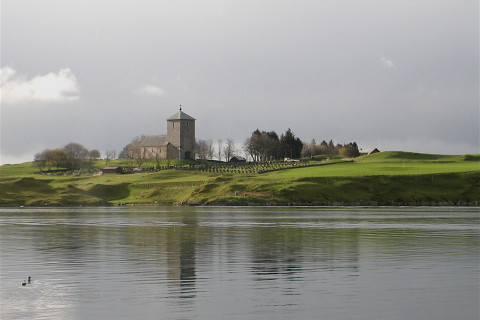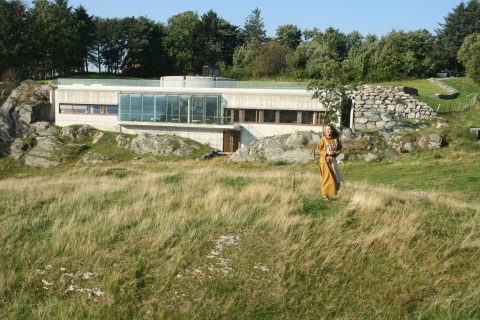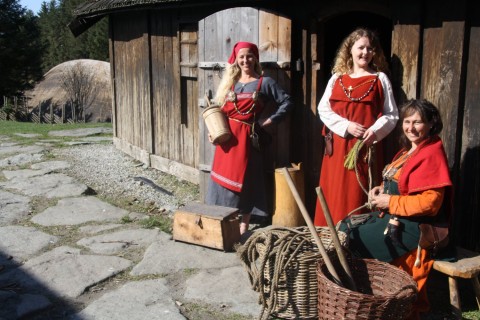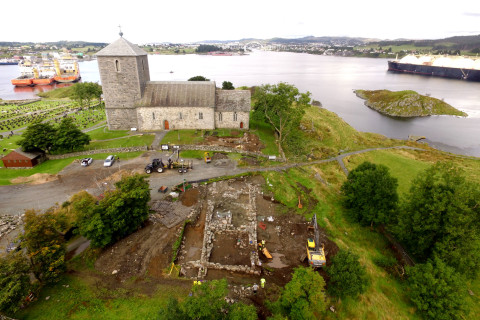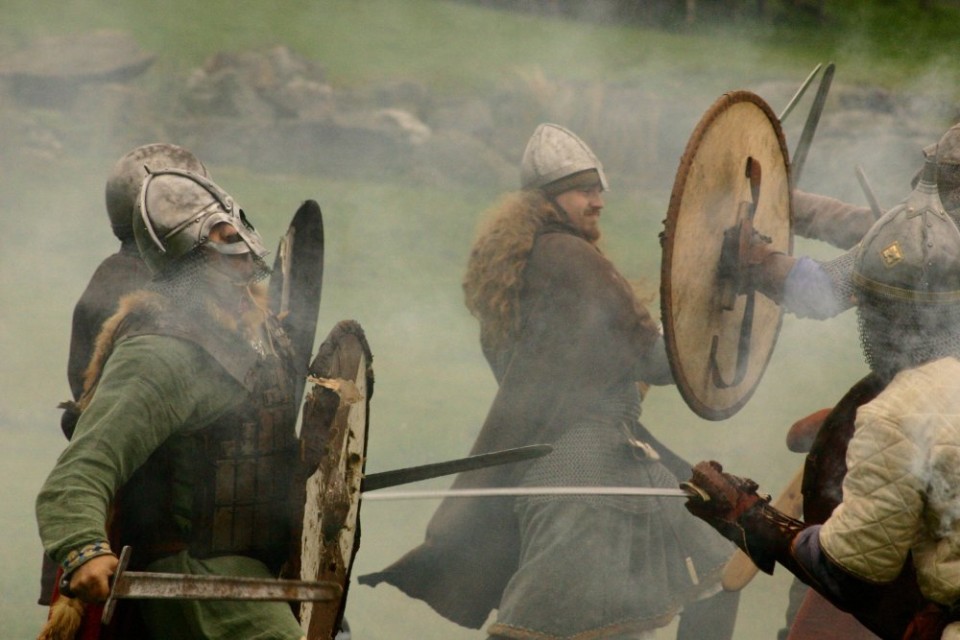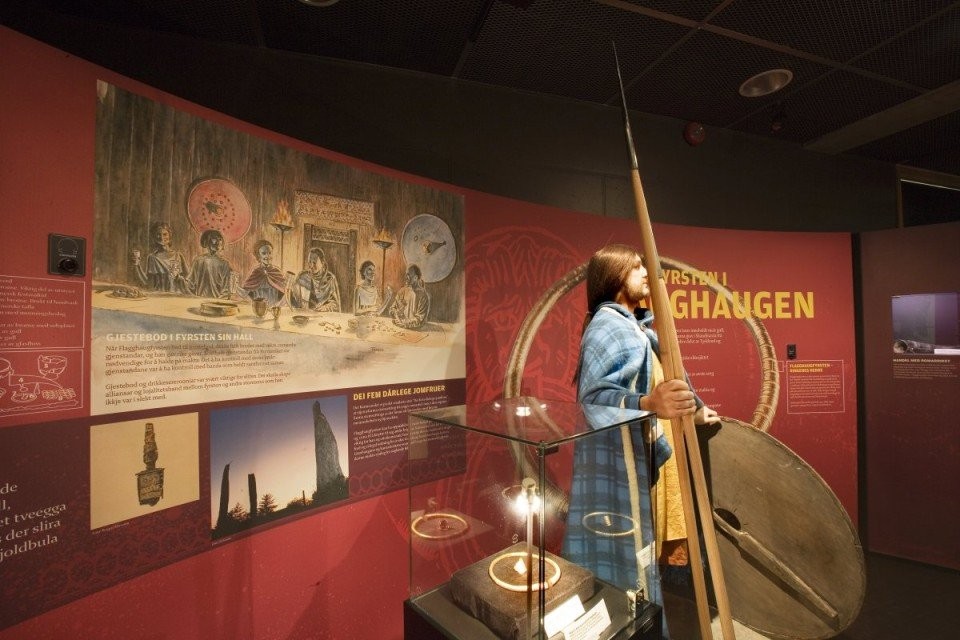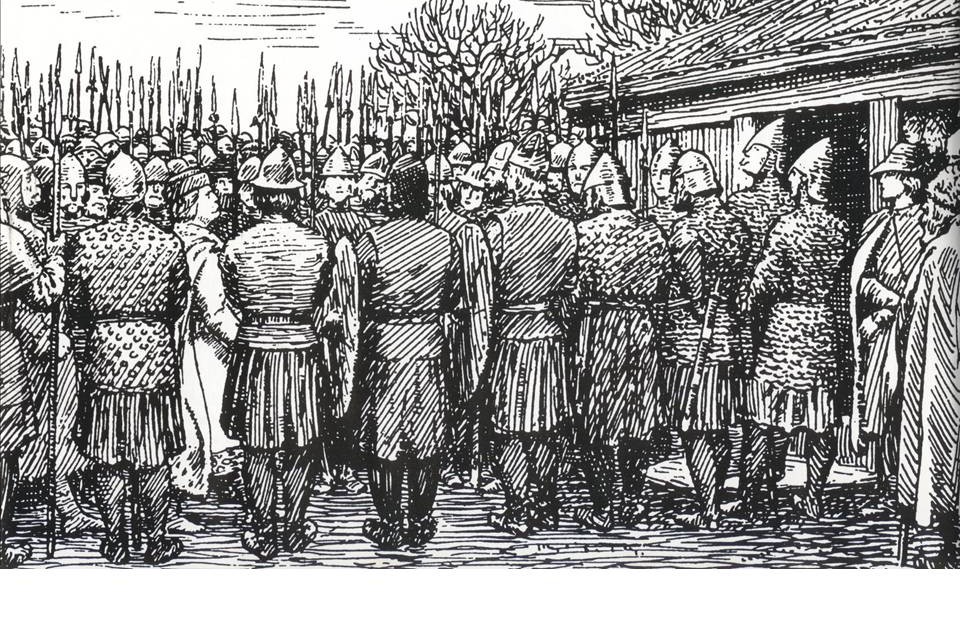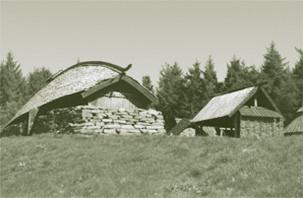Kings
Text. Marit Synnøve Vea

Odin came to Avaldsnes and told king Olav Tryggvason about king Augvald and other kings that had lived at Avaldsnes before his time. (Photo Gunnar strøm)
AVALDSNES – NORWAY’S OLDEST ROYAL SEAT
Most people know Avaldsnes as the royal residence of Harald Fairhair (Finehair) and other kings we know from the Norse sagas, but Avaldsnes was the seat of kings long before 870 AD, when Harald Fairhair placed his principal royal manor here.
Avaldsnes was a royal seat for more than 1000 years, from approx. 200 – 1400 AD, longer than anywhere else in Scandinavia. Some of these kings are known from Norse sagas and skaldic poems, others from archaeology.
THE FIRST KINGS AT AVALDSNES WERE SEA KINGS
There were several bases for sea kings along the sailing route Nordvegen (Norðvegr), but Avaldsnes was the largest and most important of these. Among the 13 sea-kings Iron Age manors in the outer coast, Avaldsnes is the site with the richest finds, most numerous monumental mounds and the longest continuity.
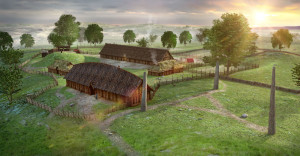
The first royal seat at Avaldsnes, about 300 AD. To the left; Hall facing the strait Karmsundet: Center of the picture; large long house. The triangular stone setting with bautas is the oldest one we know in Norway and the highest erected stones in Scandinavia. Ill. by Arkikon based on archaeological excavations.
Throughout the centuries, the sea-king milieu at Avaldsnes acquired a superb competence in ship technology, maritime skills and maritime warfare. Ship finds from the area also suggest that the sailing Viking ship was developed here.
The sea kings had the sea as their domain. They traveled to distant regions to gain friends and alliance partners, and they went on raids to plunder or fight enemies. They brought home new ideas, cultural impulses and wealth. They were innovative and the first to introduce new customs and new technology.
From this sea-king milieu, the Norwegian kingdom grew forth after Harald Fairhair came to power around 870 AD.
HARALD FAIRHAIR, THE FOUNDER OF A KINGSDOM – THE FOUNDER OF A DYNASTI
Harald Fairhair started his career as a sea king, he was the first who could truly be called the ruler of the sailing route Nordvegen. During his long reign, he extended his realm when he also gained control over the hinterland. Harald Fairhair became a land king, thus laying the foundation for the Kingdom of Norway.
Harald Fairhair was not only the founder of a kingdom; he was also the founder of a dynasty. Those who reigned after him had to prove legitimate family ties with Harald before assuming their right to the throne. It was also important for them to affirm their royal power precisely at Avaldsnes.
One obvious reason for this was Avaldsnes’ strategic location by the strait Karmsundet – The North Way. Another reason was that Avaldsnes had gained the mythical position as THE SACRED PLACE – the site where the kings could prove that they were descendants of the Gods.
9th–10th century skaldic poems as well as 13th century sagas implies that Avaldsnes was the principal royal manor of Harald Fairhair. He lived here, he died here and he was buried close to the strait Karmsund.
Harald Fairhair died around 930, but Avaldsnes continued to be a royal residence for Harald’s descendents who followed him as kings. Among these kings were Eric Blodaxe, Haakon the Good, Olav Tryggvason, St. Olaf, Haakon Haakonson and Haakon V Magnusson.
Read more: Avaldsnes – A Sea-Kings’ Manor in First-Millennium Western Scandinavia Ed. Dagfinn Skre, (Walter de Gruyter GmbH & Co KG, 2017 )
Back

